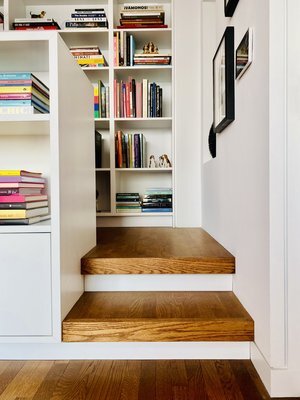Manhattan, an island at the core of New York City, is a place where the past and future collide, creating a dynamic and ever-evolving skyline. Residential architecture in Manhattan is a testament to this blend of tradition and modernity, offering a diverse array of structures that reflect the city's rich history and its continuous push towards the future. In this article, we will explore the unique characteristics and trends that define residential architecture in Manhattan.

Historical Roots and Evolution
The architectural journey in Manhattan began with colonial and European influences, evident in the brownstone row houses and ornate Beaux-Arts buildings that dot the landscape. These structures, with their detailed facades and historical significance, set the foundation for the city's residential design narrative. As the city evolved, so did its architecture, with the introduction of Art Deco skyscrapers in the early 20th century, symbolizing Manhattan's burgeoning economic power and vertical aspirations.
The Skyscraper Era
Manhattan is perhaps best known for its iconic skyline, shaped by the skyscrapers that have come to symbolize the city worldwide. Residential skyscrapers, a relatively recent addition to this architectural legacy, have transformed the way New Yorkers live, offering views, prestige, and amenities previously unimaginable. These towering structures, often sheathed in glass, reflect a modern aesthetic that prioritizes light, space, and spectacular vistas of the cityscape.
Luxury Living and Amenities
In recent years, residential architecture in Manhattan has become synonymous with luxury. High-rise buildings offer not just homes but lifestyle experiences, complete with doormen, fitness centers, private parks, and rooftop terraces. These amenities cater to a clientele that values convenience and exclusivity, driving a trend towards more opulent and service-oriented living spaces.
Architectural Diversity
Despite the prominence of skyscrapers, Manhattan's residential architecture is not monolithic. The city boasts a variety of styles, from the historic charm of Greenwich Village's townhouses to the sleek, modern designs of new developments in areas like Hudson Yards. This diversity reflects the city's multifaceted identity and offers something for every aesthetic preference.
Sustainable and Smart Homes
Sustainability has become a critical aspect of residential architecture in Manhattan, with new buildings incorporating green technologies and design principles. Features such as energy-efficient windows, green roofs, and water recycling systems are becoming standard, reflecting a growing awareness of environmental issues. Additionally, the integration of smart home technology is enhancing the functionality and efficiency of living spaces, allowing residents to control everything from lighting to temperature with the touch of a button.
The Challenge of Space
One of the defining challenges of residential architecture in Manhattan is the efficient use of space. With real estate at a premium, architects and designers are tasked with creating functional and comfortable living areas within limited square footage. This has led to innovative solutions, including multi-purpose furniture, built-in storage, and open-plan layouts that maximize both space and light.
Future Trends
Looking ahead, residential architecture in Manhattan is poised to continue its evolution. Emerging trends include the increased use of modular and prefabricated construction methods, which offer the potential for more affordable and efficient building processes. Additionally, the demand for more community-oriented living spaces is leading to designs that emphasize shared areas and social interaction, reflecting a shift towards more inclusive and connected urban living.
Conclusion
Residential architecture in Manhattan offers a fascinating glimpse into the interplay between tradition and modernity, luxury and functionality, individuality and community. It is a field that continuously adapts to the changing needs and desires of its residents, reflecting the dynamic spirit of the city itself. As Manhattan moves forward, its residential architecture promises to remain at the forefront of design innovation, sustainability, and urban living.

No comments yet